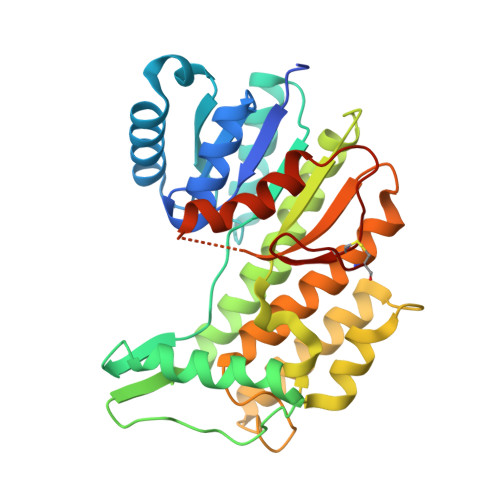Pinpointing a Mechanistic Switch Between Ketoreduction and "Ene" Reduction in Short-Chain Dehydrogenases/Reductases.
Lygidakis, A., Karuppiah, V., Hoeven, R., Ni Cheallaigh, A., Leys, D., Gardiner, J.M., Toogood, H.S., Scrutton, N.S.(2016) Angew Chem Int Ed Engl 55: 9596-9600
- PubMed: 27411040
- DOI: https://doi.org/10.1002/anie.201603785
- Primary Citation of Related Structures:
5L4S, 5L51, 5L53, 5LCX, 5LDG - PubMed Abstract:
Three enzymes of the Mentha essential oil biosynthetic pathway are highly homologous, namely the ketoreductases (-)-menthone:(-)-menthol reductase and (-)-menthone:(+)-neomenthol reductase, and the "ene" reductase isopiperitenone reductase. We identified a rare catalytic residue substitution in the last two, and performed comparative crystal structure analyses and residue-swapping mutagenesis to investigate whether this determines the reaction outcome. The result was a complete loss of native activity and a switch between ene reduction and ketoreduction. This suggests the importance of a catalytic glutamate vs. tyrosine residue in determining the outcome of the reduction of α,β-unsaturated alkenes, due to the substrate occupying different binding conformations, and possibly also to the relative acidities of the two residues. This simple switch in mechanism by a single amino acid substitution could potentially generate a large number of de novo ene reductases.
Organizational Affiliation:
Manchester Institute of Biotechnology, University of Manchester, Manchester, M1 7DN, UK.















